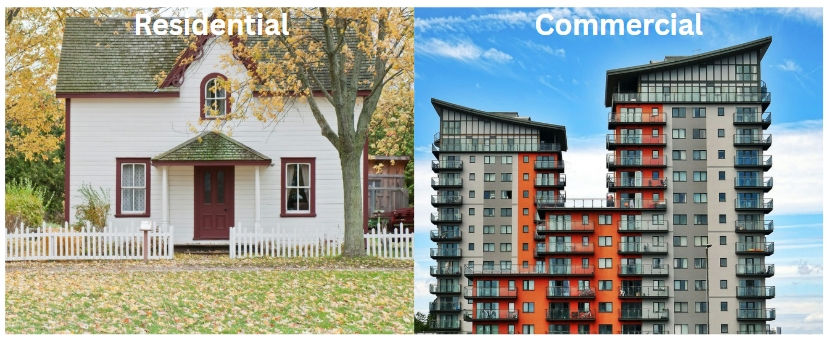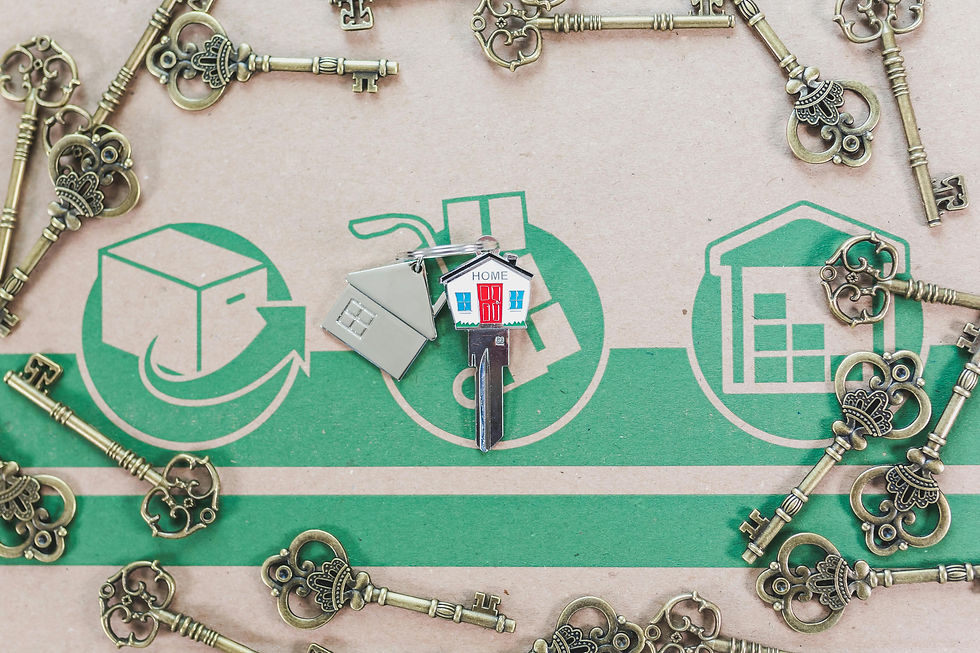The Ultimate Guide to Commercial Real Estate (CRE) in NYC: What New Investors Need to Know
- gary wang
- May 12
- 3 min read
🗽 NYC Real Estate: More Than Brownstones and Co-ops
New York City real estate is legendary—but it’s not just townhouses and high-rise condos. If you want to build long-term, scalable wealth, you need to look beyond residential and into commercial real estate (CRE).
Whether it’s a SoHo storefront, a logistics hub in Queens, or a 12-unit apartment building in Brooklyn, CRE investments are how many of NYC’s wealthiest landlords built their empires.
🧾 What Counts as Commercial Real Estate?
Commercial real estate refers to properties used for business purposes or to generate income beyond just housing one or two families.
Common CRE Property Types in NYC:
🏢 Office Buildings – Think skyscrapers, coworking spaces, and mid-rise professional suites.
🛍️ Retail Properties – Ground-floor shops, strip malls, or entire retail centers.
🏭 Industrial Sites – Warehouses, manufacturing spaces, and last-mile distribution hubs.
🏨 Hospitality – Hotels, short-term rentals (zoning permitting), and boutique lodgings.
🏘️ Commercial Residential Buildings – Multifamily properties with 5 or more units.
🌆 Mixed-Use Properties – Retail or office on the ground floor, apartments above.
🌱 Land Zoned for Commercial Use – Especially valuable in emerging neighborhoods.
🏢 CRE vs. Residential: What’s the Real Difference?
Residential property typically refers to:
1–4 unit homes (brownstones, duplexes, townhomes, condos)
Purchased for personal use or to rent to individuals or families
Commercial residential property refers to:
Buildings with 5+ units, considered commercial for lending and zoning
Valued and financed differently than 1–4 unit buildings
Feature | Residential Property | Commercial Property |
Units | 1–4 units | 5+ units (multifamily) |
Tenants | Individuals/families | Businesses or multiple tenants |
Lease Terms | 1-year typical | 3–10+ years (business) |
Financing | Residential mortgage | Commercial loan |
Valuation | Based on comps | Based on income (NOI/Cap Rate) |
Regulations | Strict tenant laws | Lease agreements can be more flexible |
🏘️ Example:
A 3-family brownstone in Bed-Stuy = residential
A 10-unit building in Ridgewood = commercial residential

💵 How CRE Makes Money
Commercial real estate generates revenue primarily through:
Rental Income – Higher, more stable cash flow from long-term tenants.
Appreciation – Property value increases with demand and improvements.
Tax Benefits – Depreciation, 1031 exchanges, and cost segregation strategies.
Value-Add Opportunities – Renovate, rezone, or re-tenant to increase income.
🔢 How CRE Is Valued in NYC
Residential values rely on comps (comparable sales). But CRE relies on income:
📌 Cap Rate Formula:
Cap Rate = Net Operating Income (NOI) / Purchase Price
NOI = Annual income – operating expenses (not including mortgage)
Higher NOI = higher property value
Lower cap rate = lower risk (e.g., Class A Midtown office)
Higher cap rate = higher risk, higher return (e.g., industrial in the Bronx)
🛠️ Your CRE Launch Checklist
1. 📍 Pick a Niche and Borough
Retail in SoHo? Office in Midtown? Industrial in Bushwick?
Each borough has different entry points and cap rates.
2. 🤝 Build Your CRE Dream Team
Commercial broker
Zoning lawyer
Real estate CPA
Title and insurance experts
Property manager (especially for multifamily or mixed-use)
3. 🏦 Secure the Right Financing
Traditional CRE loan (via banks/lenders)
Private or hard money lenders (for speed or value-add deals)
SBA 504 Loan (if you plan to occupy 51%+ of the building)
4. 🔍 Run the Numbers
Calculate Cap Rate, Cash-on-Cash Return, Debt Service Coverage Ratio (DSCR)
Factor in vacancy rates, maintenance, and CAM charges (for retail)
❗ Challenges to Expect in NYC CRE
🏗️ High entry prices
⚖️ Complex tenant laws (especially with rent-stabilized buildings)
🧱 Deferred maintenance in older buildings
🕵️♀️ Due diligence risks (zoning, liens, environmental issues)
💼 Longer vacancies for retail or office if demand shifts
🏁 Final Thoughts: Is NYC Commercial Real Estate for You?
If you're ready to graduate from managing tenants in a duplex to managing assets that generate six-figure NOI, commercial real estate is your next step.
Yes, it’s more complex. Yes, the learning curve is steeper. But with the right knowledge, the upside is unmatched—especially in NYC, where global demand never fades.
You don’t need to start with a $20M office tower. A $1.5M 6-unit in Ridgewood or a $900K industrial condo in Long Island City could be your launchpad.




Comments